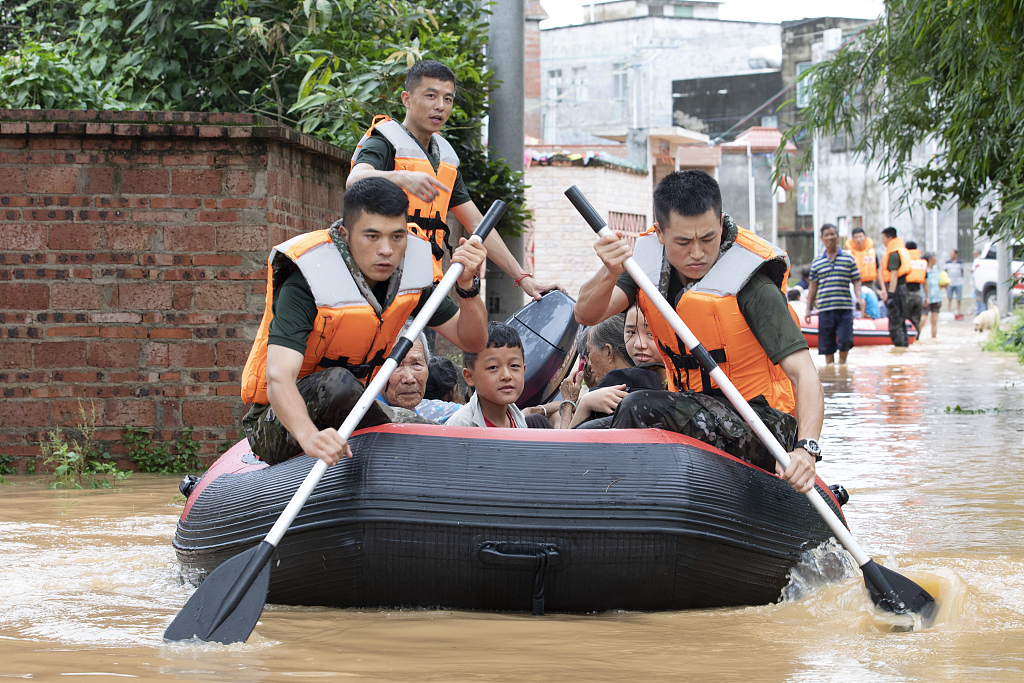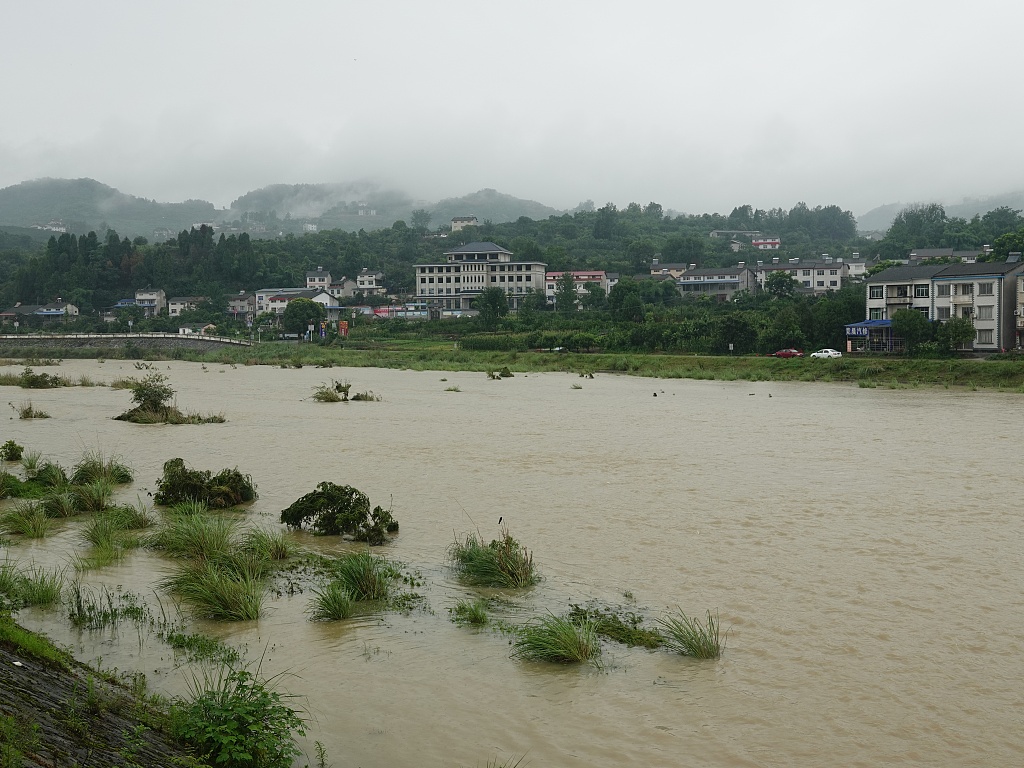As El Nino conditions have developed and will impact China's climate and weather, the country ramps up its flood control and disaster relief efforts to safeguard people's lives and properties.

Chinese soldiers transport residents who were affected by floods with an inflatable canoe, Beihai City, south China's Guangxi Zhuang Autonomous Region, June 9, 2023. /CFP
Chinese soldiers transport residents who were affected by floods with an inflatable canoe, Beihai City, south China's Guangxi Zhuang Autonomous Region, June 9, 2023. /CFP
What China has done
China's State Flood Control and Drought Relief Headquarters scaled up its level-IV emergency response to flooding on Sunday to include eight provincial-level regions.
China has a four-tier flood-control emergency response system, with Level-I representing the most severe response.
East China's Jiangsu and southern China's Guangxi were newly added by the headquarters, following Zhejiang, Anhui, Jiangxi, Hunan, Hubei and Guizhou provinces.
It sent two work teams to guide the flood control work in Hunan and Hubei provinces and Jiangxi and Anhui provinces, respectively.
The headquarters has instructed local authorities to step up monitoring and forecasts, ward off mountain torrents, waterlogging and other disasters, relocate those at risk in time, and go all-out in the rescue and relief work.

Service station for outdoor workers provides them watermelon and other supplies, Shenyang City, northeast China's Liaoning Province, June 14, 2023. /CFP
Service station for outdoor workers provides them watermelon and other supplies, Shenyang City, northeast China's Liaoning Province, June 14, 2023. /CFP
While some regions are getting ready for flood control, provinces in northern China that have been gripped by the sweltering weather are finding ways to beat the heat.
Jinan, the capital of Shandong Province, has ordered sanitation workers to suspend outdoor work between 11 a.m. and 4 p.m., when the daytime temperature exceeds 35 degrees Celsius, and to stop all outdoor operations for the whole day, when the temperature climbs to over 38 degrees Celsius.
To combat drought induced by persistent heat, the Liaoning Provincial Department of Water Resources has increased water reserves in some areas in advance to ensure a reliable water supply and guarantee food security in the rice-producing regions. The cumulative supplemental water volume in large and medium-sized irrigation areas has reached 186 million cubic meters since June 12.
How El Nino affects China
El Nino is a natural climate phase that boosts global temperatures and alters weather patterns around the world, dramatically increasing rainfall in some parts of the globe while reducing it in others.
Earlier in June, American Oceanic and Atmospheric Administration (NOAA) said that El Nino arrived as the atmospheric response to the warmer-than-average tropical Pacific sea surface kicked in over the past month.
The emergence of the El Nino event marks the return of traditional way of "wet in the south and dry in the north" in China, according to Zhou Bing, chief expert on climate services at the China Meteorological Administration.
"This summer (from June to August), there are two rain belts in the north and south of China, and the precipitation in eastern Heilongjiang, southern Zhejiang, Fujian, southern Jiangxi, Guangdong, eastern Guangxi, Hainan, and central and western Yunnan is 2 to 5 percent more than that in other places, and the possibility of extreme heavy precipitation is relatively high," said Zhou.

The water level increases in one tributary of the Yangtze River in Yichang City, central China's Hubei Province, June 18, 2023. /CFP
The water level increases in one tributary of the Yangtze River in Yichang City, central China's Hubei Province, June 18, 2023. /CFP
"It is expected that this summer, except for central and northern Heilongjiang where the temperature is 0.5 to 1 degree Celsius lower than that of the same period of the past years, the temperature in most parts of the country is 0.5 degree Celsius higher," Zhou added.
Zhou explained that an excess of 0.5 degree Celsius is quite a phenomenon.
From the perspective of climate change, Earth's temperature has risen by an average of 0.18 degree Celsius per decade since 1981. For China, the average temperature has risen 0.26 degrees Celsius a decade since 1951, and the annual average warming is 0.026 degrees Celsius.
To learn more
What is El Nino and how does it heat up our world?
Heatwave hits China - will this summer be even hotter?
(With input from Xinhua)
(If you have specific expertise and want to contribute, or if you have a topic of interest that you'd like to share with us, please email us at nature@cgtn.com.)